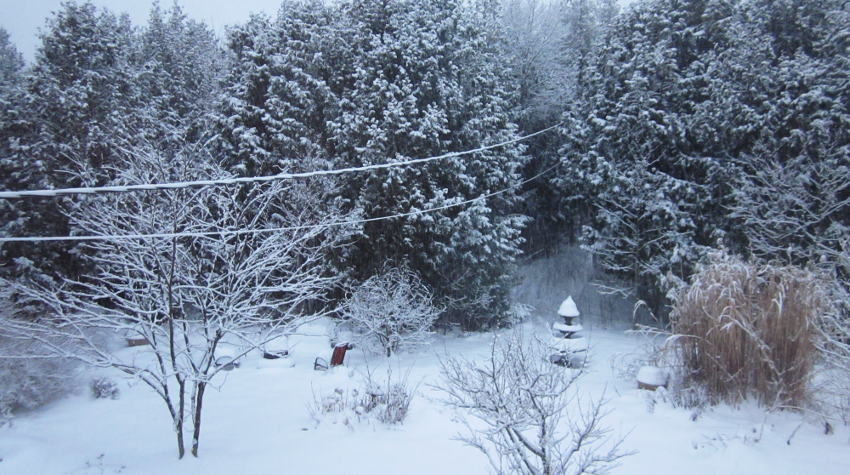When the winter comes around, some plants need a little help to ensure they survive the winter. Once you know what you're protecting your plants from, you can quickly find the right solution to protect your plants.
Before running out and buy all your supplies for winter protection, you should really think about what you're protecting your plants from. Wrapping a cedar with burlap won't protect it from salt damage. Paper tree wrap protects your tree from sun damage, but not from rodents.
So what are we protecting our plants from in the garden?
Sun
Believe it or not, sun can cause major damage to plants in the winter. In the winter, the sun can warm the south side of a plant to the point sap starts to flow ever so slightly. When the night comes, the cold temperature cause the cells to freeze and burst causing all kinds of problems.
Protect: Dwarf Alberta Spruce, Maple Trees, Emerald Cedars
With: Paper Tree Wrap, Burlap Wrap, Synthetic Wrap
Wind
Think of the winter wind like a turbo hand-drier, it dries very quickly, but too much and it causes your skin to get rough and cracked. Since plants don't really recover moisture in the winter, they dry out or desiccate.
Protect: Dwarf Alberta Spruce, Japanese Yews, White Pines
With: Burlap Fence, Snow Fence
Salt
If you remember old science classes when you look through an onion skin and add salt water, you know what salt can do. Effectively, salt sucks all the moisture out of a cell and the same thing happens to plants.
Protect: Most Evergreens, White Pines, Most woody plants
With: Burlap Screens, Synthetic Fabric
Rodents
Rodents are hungry little critters and typically eat the bark off trees and shrubs. Since all of the plant's sap runs just under the bark, rodent damage is like severing an artery to a plant.
Protect: Roses, Euonymus, Fruit Trees
With: Skoot animal repellent, Rodent Bait, Heavy plastic wraps
Cold
All plants die if they get too cold. The temperature of the root system is even more critical in a plant than the air temperature. Once the roots of a plant die, then it cannot recover. Plants that experience top die-back can often recover quite quickly.
Protect: Marginally hardy perennials, Magnolias, Roses
With: Mulch, Snow Fences, Fluffy Snow, Upsidedown Pots
Snow and Ice
Snow and ice buildup are less common, but the weight can physically break plants. It is difficult to protect most plants from this type of damage, though it is a good idea to protect the most susceptible plants.
Protect: Columnar plants, especially Skyrocket or Blue Arrow Junipers, Evergreens in areas of excess snow buildup
With: Garden Netting, Twine
At times, protecting a plant from one element can create a weakness in other areas. It's very important to keep all aspects in mind when trying to protect a plant and not forget about other possible issues.
Burlap, for example, makes a great and very versatile winter protection, but it can hold salt within it's fabric. In doing so, you may inadvertently create a salt problem which you didn't have in the past. Burlap works very well when separated from the plant, either as a fence or using a wooden "tee-pee" over the plant to create an air gap.
Protecting plants from cold using mulch or upsidedown pots covered in leaves can also introduce rodent issues. If winter protection is added too soon, it creates an ideal habitat for rodents. This is particularly important with roses. Waiting until the ground has some frost in it usually prevents this problem.
It may sound like there's quite a bit of work in the fall, but it's easier than you think. Make a short list of plants that may need protecting and then write down what you are protecting from. In then end, one roll of burlap, some mulch, or a couple tree wraps may solve your problems with only a couple of hours of work.

